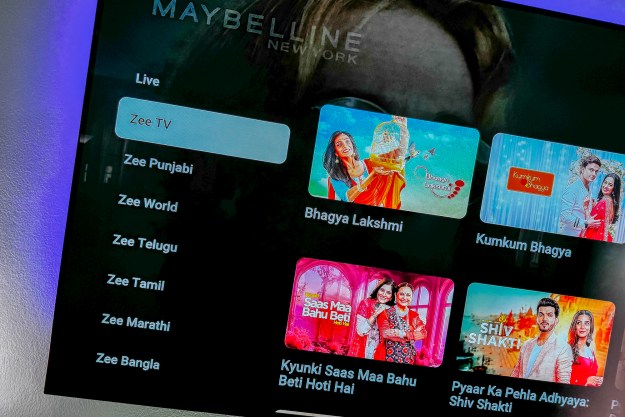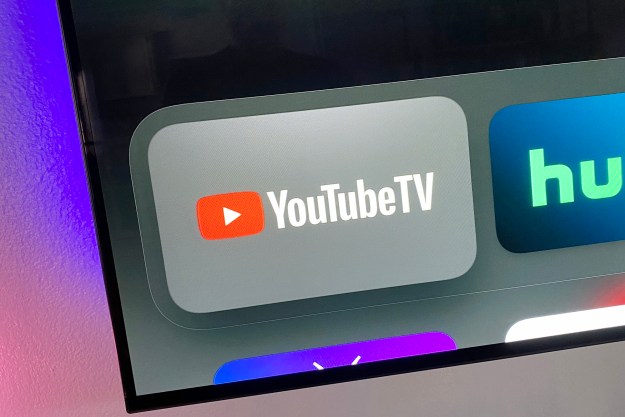There is little I loathe more than when two multi billion-dollar companies fight — and drag their customers into the fray. But such is what’s happened yet again, this time with YouTube TV and NBCUniversal going at it over what are known as carriage rights. That is, the deal that allows YouTube TV to carry channels owned by NBCUniversal.
Sometimes those deals are renewed with nary a peep. Other times, one side wants more money than the other is willing to pay, or it wants to inject some other terms that are deemed unacceptable, and everyone starts to do their dance. One side says the other is is going to take away your channels. The other side says it’s being perfectly reasonable and just wants things to stay as they were before. Then comes the all-caps crawl across your screen, warning you that UNLESS YOU CALL YOUR CABLE/SATELLITE/STREAMING SERVICE, YOU WILL LOSE CHANNELS AND NOBODY WILL LIKE YOU ANYMORE.
It happens again and again. It’s tiresome, particularly given the fact that neither side will be hurting for revenue, no matter who the players are.
And it’s yet another reminder of how spending a few dollars on an over-the-air antenna now can help you avoid a good chunk of this type of situation.

As a reminder, come September 30, YouTube TV will lose access to a smattering of NBCUniversal channels. [Update Oct. 1: The two companies have agreed to “a short extension.”] They include NBC, Bravo, CNBC, E!, Golf Channel, MSNBC, Oxygen, SYFY, Telemundo, The Olympic Channel, Universal Kids, Universo, and USA Network. NBC proper is being used as the major bargaining chip due to it being the home of a good bit of live sports, most notably the NFL on Sunday nights. And now’s as good a time as any to point out that just three days after the current deal strips NBC from YouTube TV, Tom Brady and the Tampa Bay Buccaneers will travel to the New England Patriots for the future Hall of Famer’s first trip back to Foxborough since Brady left his old team for the Sunshine State in 2020.
So, yeah. It’s kind of a big deal. But it’s also the kind that you quite possibly can fix with a relatively inexpensive over-the-air antenna. Yes, the same kind of antenna that your parents (or grandparents) might have used with their televisions back in the pre-cable era, when you’d have to point those rabbit ears a certain direction, or beef things up with a bit of aluminum foil. Things are different now, though. We’ve got a lot more options that look better — and work better. And they’ll get you the same NBC that you can get on YouTube TV, only this time it’s for free, and nobody can take it away from you.
An over-the-air antenna lets you watch local broadcast channels like NBC for free.
What you need to know about antennas
An over-the-air antenna is exactly what it sounds like. Channels like ABC, CBS, NBC, PBS and Fox are still required to be broadcast over the air via VHF or UHF radio frequencies (back in the pre-cable days, it was the only way to do things), and you’re able to pluck those broadcasts out of the air with an antenna.
There are two basic ways to think about said antennas, and they mostly speak to where they’ll be mounted. There’s indoor, and there’s outdoor. The general rule of thumb is that the higher the antenna is mounted, and the fewer things between it and the radio signal, the better the reception is going to be. That means mounting an antenna outside and up high is better than inside and down low, and you’ll also want to avoid obstacles, if at all possible, like trees. Buildings and mountains could be a little more difficult to work around.
There’s also no denying the plethora of antennas that are meant to be mounted to a window. They’re cheap, and they’re easier to mount than something that requires you to run a length of coax cable through an exterior wall. But the height rule still applies. Higher in a window is better than lower in a window.
The other major things to keep in mind is that radio signals are directional and signal strength matters. So, too, does the receiving strength of the antenna itself. There’s math involved, and the oversimplified version is that the higher the gain on an antenna, the more directional it will be. So there could well be some trial and error involved. There are apps that will help you locate the best direction for an antenna where you live, or you can hit up the Federal Communications Commisssion’s reception maps in a web browser. My weakest channel is my local Fox affiliate, which comes in from the west. I couldn’t get it from an antenna facing east, so I needed to adjust and make sure I had one pointing west. Problem solved.
How to actually watch with an antenna
Once the antenna is mounted, you need to connect it to your television. Most TVs will have a coax connector on the back (there was a brief minute when televisions didn’t ship with tuners). Connect the antenna — and the amplifier, if it came with one — to the television, and you’re good to go. Almost. You’ll need to scan for channels on the TV first. That usually takes just a few minutes. After that, you’re for sure good to go. You should have the major local broadcast channels, and even a few that you didn’t know about because those channels often have secondary broadcasts that are available.
If that seems to be a little low-tech for 2021, well, it is. That’s the same way we watched TV back in the 1980s and before. Pre-cable. Pre-satellite. And definitely pre-internet. And plugging a single antenna into a single television means you can watch one thing at a time on a single screen.
Today, though, there’s a better way. Products like HDHomeRun and Tablo allow you to connect a single antenna to a box that contains multiple tuners — some have as many as four — and watch multiple channels on multiple devices at the same time. There also are options for recording that over-the-air broadcast. So even if you can’t watch Brady and Gronk beat up on their former team live on NBC on Sunday night, you’ll still be able to watch later. Both products are excellent, and they’re a good (if pricey) investment, especially if you’re used to watching the game on a couple TVs in a couple of rooms at the same time.
Yes, you will have to shell out a little money for this. But the basic method of using an antenna can be done for $20 or so. And that’s a small price to pay to get out from under the latest feud from a couple companies that will not hesitate to drag you into the middle of their spat the next time contract negotiations come up again.
Editors' Recommendations
- YouTube just massively angered Apple fans by adding a feature
- Yes, YouTube TV is kind of broken tonight
- Does Sling TV have ABC?
- YouTube TV just got even better on iPhones and iPads
- What is YouTube Premium? Price, content, and more



